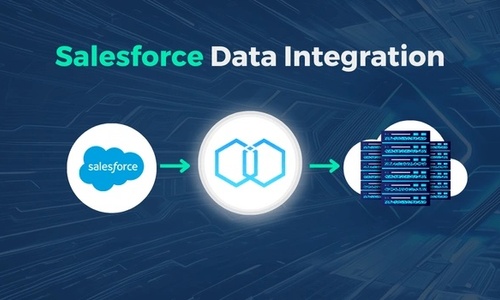Salesforce has become an indispensable tool for managing customer relationships in various organizations. But did you know that by syncing Salesforce data with other platforms and feeding data into Salesforce, your organization can develop a more complete view of your customers? This is where the concept of Salesforce data integration comes into play, enabling your team to act on valuable insights swiftly.
In this article, we'll delve into the transformative potential of Salesforce data integration for businesses.
Here's a quick snapshot of what you can expect:
- Discover how Salesforce data integration can offer a more comprehensive view of your customers, empowering your team to act promptly on valuable insights.
- Understand the multitude of benefits that come with Salesforce data integration, including data enrichment, increased data accessibility, more flexible analytics, real-time data updates, and a unified source of truth.
- Acknowledge the challenges that may arise during Salesforce data integration, and learn how third-party tools can simplify the process.
- Learn about the significant role of ETL solutions in Salesforce data integration, and how they can streamline the data pipeline setup process, catering to both single integrations and continuous updates.
Advantages of Integrating Salesforce Data
Merging your Salesforce data with other information sources can be a game-changer for your organization. Here are some compelling reasons why:
- Data Enrichment: Salesforce may not contain every minute detail about your customers. By integrating data, you can fill these gaps, leading to an elevated customer experience. For instance, suppose your organization has an e-commerce platform. In that case, you might integrate data about customers' browsing habits and purchase history, allowing your sales team to better tailor their interactions.
- Data Accessibility: Your CRM shouldn't be the only place where your customer data resides. By integrating Salesforce data with other tools, your team can make data-driven decisions more effectively.
- Analytics Flexibility: While Salesforce offers robust analytic functionality, it might not meet all your organization's needs. By migrating Salesforce data into a data warehouse like BigQuery, you can drastically enhance your data analysis capabilities.
- Real-time Data Updates: An integrated Salesforce data system ensures any changes in data are updated swiftly, providing your team with the latest information to secure deals and enhance customer satisfaction.
- Establishing a Single Source of Truth: Setting up Salesforce with your organization's primary data source, such as a data warehouse, can ensure you always work with accurate, up-to-date data.
Common Obstacles in Salesforce Data Integration
The process of Salesforce data integration isn't without its challenges. It can be tricky to keep everything organized when dealing with multiple data sources. Salesforce's in-house tools require either a level of interaction or coding knowledge, which may present a hurdle if you lack the technical resources. Not to mention, the Salesforce governor limits can be a stumbling block during data integration. That's where third-party tools can lend a hand, making the process of moving salesforce data less complex.
The Role of ETL in Streamlining Salesforce Data Integration
There's an array of third-party tools available for Salesforce data integration, but Extract, Transform, Load (ETL) solutions stand out for their versatility. They extract data from the source, customize it to fit your needs, and then load it into the desired destination.
ETL solutions simplify the process of setting up data pipelines, irrespective of whether you need a single integration or continuous updates. This is where tools like Integrate.io come in. This user-friendly, cloud-based ETL tool integrates seamlessly with Salesforce and various other data sources, databases, and data warehouses.
The advantage of Integrate.io lies in its drag-and-drop data pipeline builder, which allows you to set up fully automated data pipelines swiftly. It even supports Salesforce-to-Salesforce operations, a feature you'll find handy if you wish to merge Salesforce data with other sources before re-loading it into the platform or when you want to transfer data between two Salesforce organizations.
Moreover, Integrate.io supports Salesforce's Bulk API, dramatically reducing the resources required to harness Salesforce data. The best part? Its cloud-based architecture and static pricing model make it a cost-effective choice that scales with your needs. So, why not leverage Integrate.io to unlock the full potential of your Salesforce data?
To see how Integrate.io can revolutionize your Salesforce data integration process, sign up for a free 14-day trial. Alternatively, schedule some time with one of our experts to get a free demo of the product so you can get the most out of your trial. Experience firsthand the power of effective data integration, and give your team the tools they need to drive success.










